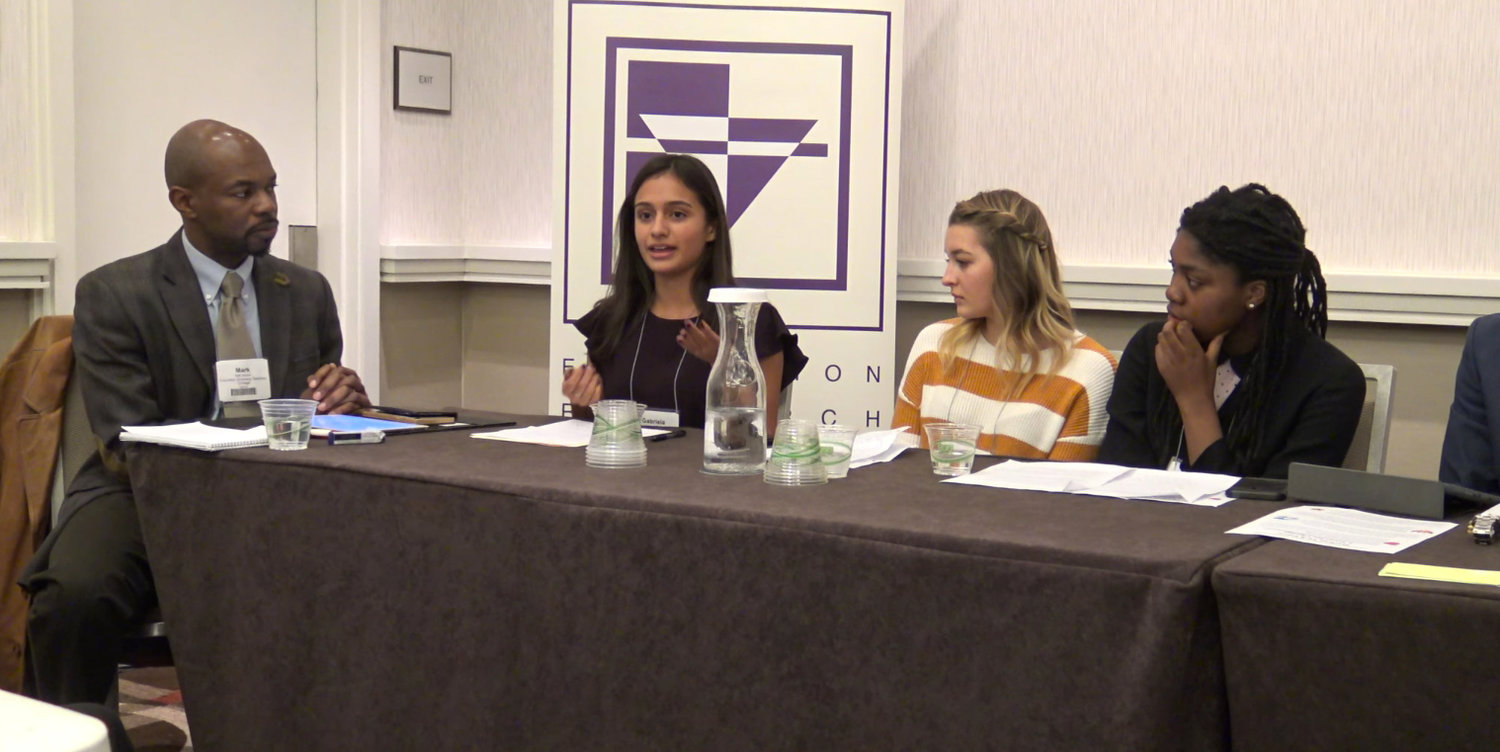Bellmore-Merrick students speak on racial equity
Elaine Gross, president of ERASE Racism, wants to end racial injustice and inequity on Long Island. To tackle the problem in schools, the activist group enlisted a panel of nine concerned students — including two from the Bellmore-Merrick Central High School District.
Gabriela Daza is a Puerto Rican and Colombian senior at Mepham, and Whitney Sussman is an Asian-American senior at John F. Kennedy, both predominantly white schools, and both girls have described how a lack of diversity can go unnoticed in high schools.
“Some students struggle with cultural identity,” said Daza, who is president of her class. “If I’m Hispanic, and if I don’t feel represented and my family isn’t overly cultured, I’ll start to act based off of what I think Hispanics should act like. Sometimes this leads to students making bad choices, or they can fall into bad stereotypes.”
Long Island is one of the 10 most segregated metropolitan areas in the country, according to Gross (see sidebar). Although the population becomes more diverse each year, some communities are becoming more segregated.
Gross invited the Student Task Force to the New York State School Boards Association and Education Expo in Manhattan Oct. 25-27. There, Daza and Sussman expressed their concerns to the trustees and teachers who attended the event.
“Just like Gabby, I’m also part of a school that’s predominantly white,” Sussman said. “Because of the student demographic I’m in, I feel that racism and inequity is often overlooked and pushed aside just because it might make people feel uncomfortable.”
The ERASE team pointed to disparities between majority-white and minority school districts at the panel. Daza said that minority students sometimes receive unnecessary sympathy when being taught about topics such as slavery and civil rights.
Gross and the task force said they weren’t blaming anyone — “It’s nobody’s direct fault,” Daza said. According to members of the panel, the problem exists at a higher level than individual school board members, but opening a dialogue between the board and students could be beneficial.
One school board trustee at the panel recommended an activity his own board does — inviting the students to a pizza night. If enough students attend, a dialogue can start, so staff and students might tackle the issue of underrepresentation together, whether the problem is social or academic, the trustee said.
“Most discussions exist between school board members, teachers and other higher authorities,” Daza said. “If they actively contact students, board members can listen and talk to them, hopefully understanding their specific problems.”
Curriculum at schools can be adjusted, too, Gross said. “If you have a more inclusive curriculum, students will become culturally responsive and appreciate those cultures,” she added. “There are so many lessons that can be taught where I hear students say, ‘I never heard about that.’”
Mepham offers a variety of events and programs celebrating its minority cultures, Daza said. A South Eastern Culture Night is held every year, and Daza, as class president, is organizing a culture week for March. It will celebrate various cultures, with Italian, French and Hispanic nights. Daza also noted that Mandarin was recently added as a secondary language, and that the school held an event that highlighted the plight of refugees and warned of the dangers of Islamophobia.
Student representation is not the only racial issue that ERASE takes on. Currently, the group is hosting Island-wide discussions on the question, “How do we build a just Long Island?”
“In some areas, you just won’t learn that stereotypes aren’t true,” Daza said. “Students would benefit by learning about other’s experiences.”






